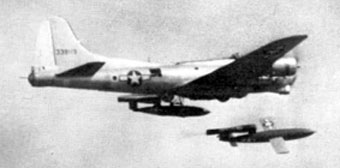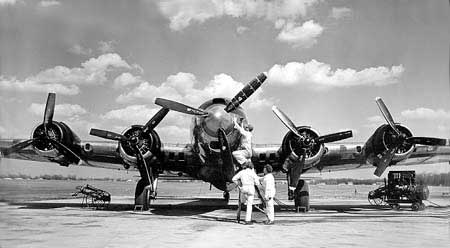

|
Designed in 1934 as the Boeing 299,fir the Army Air Corps. The B-17 was to become the most well-known American bomber of the Second World War aa well as the most used, being flown by both side ( the German's had up to 60! in service). As the B-17 was a very well built and robust aeroplane, it was the first chose when the USAAF experimented with air-launching the Republic JB-2 to test the practically of such operations with the 1946 invasion of Japan in mind. |

|
 |
The USAAF were so impressed with the results that the order for 1,100 JB-2's was increased to 75,000 in January 1945, how ever with the surrender of Japan in August of that year the perceived need for such a weapon and in such numbers was lost and in September of 1945 the Jb-2 program was terminated. |
|
The same aircraft (339119)
just before take off
|
|
In 1946, two B-17Gs were modified as flying testbeds for experimental turboprop engines, with the company number of Model 299-Z. All the military equipment was removed, the pilot's cockpit was moved farther back, and the nose was completely modified to accommodate the experimental engine. Later the first aircraft was used to test the Wright XJ65 turbojet, the engine being slung below a streamlined nose structure and the intake being covered with a cap for protection during ferrying. This aircraft contuned flying untill crashing on takeoff in 1980. |
 |